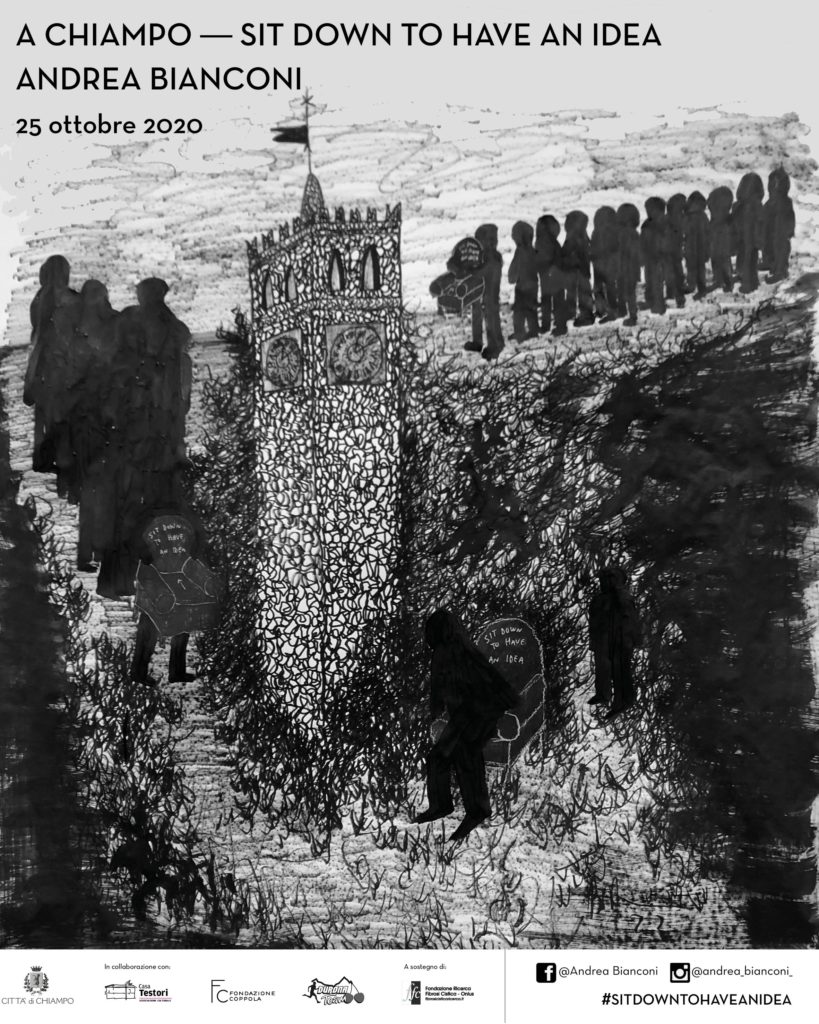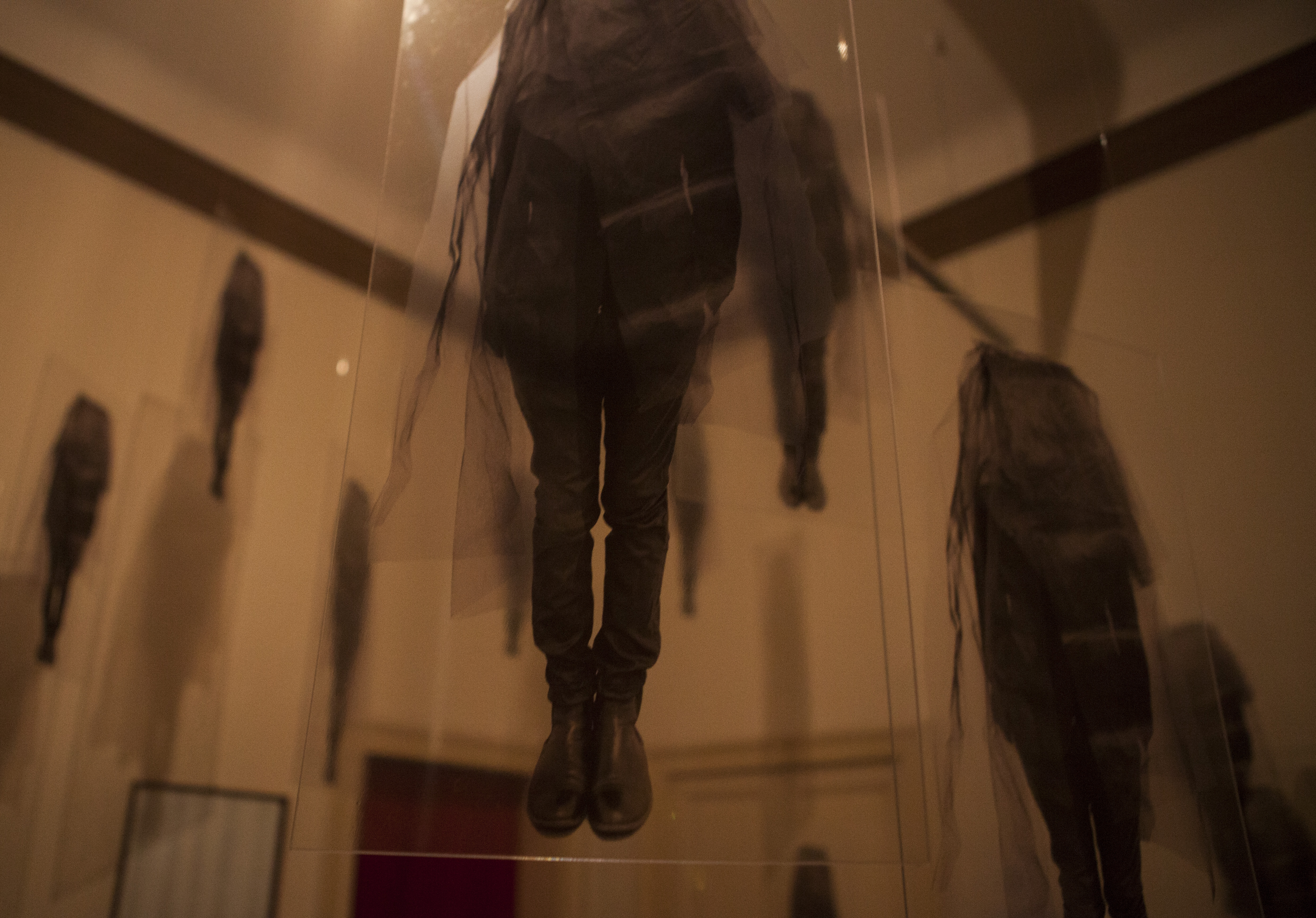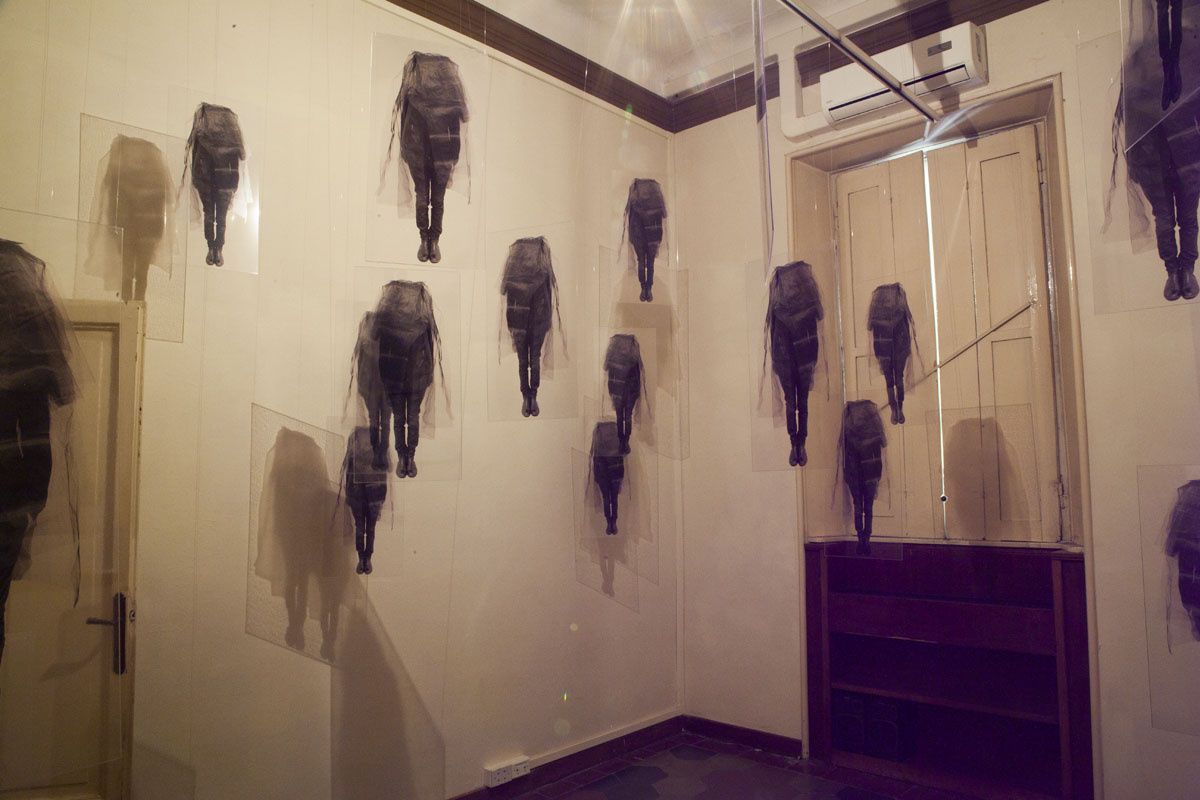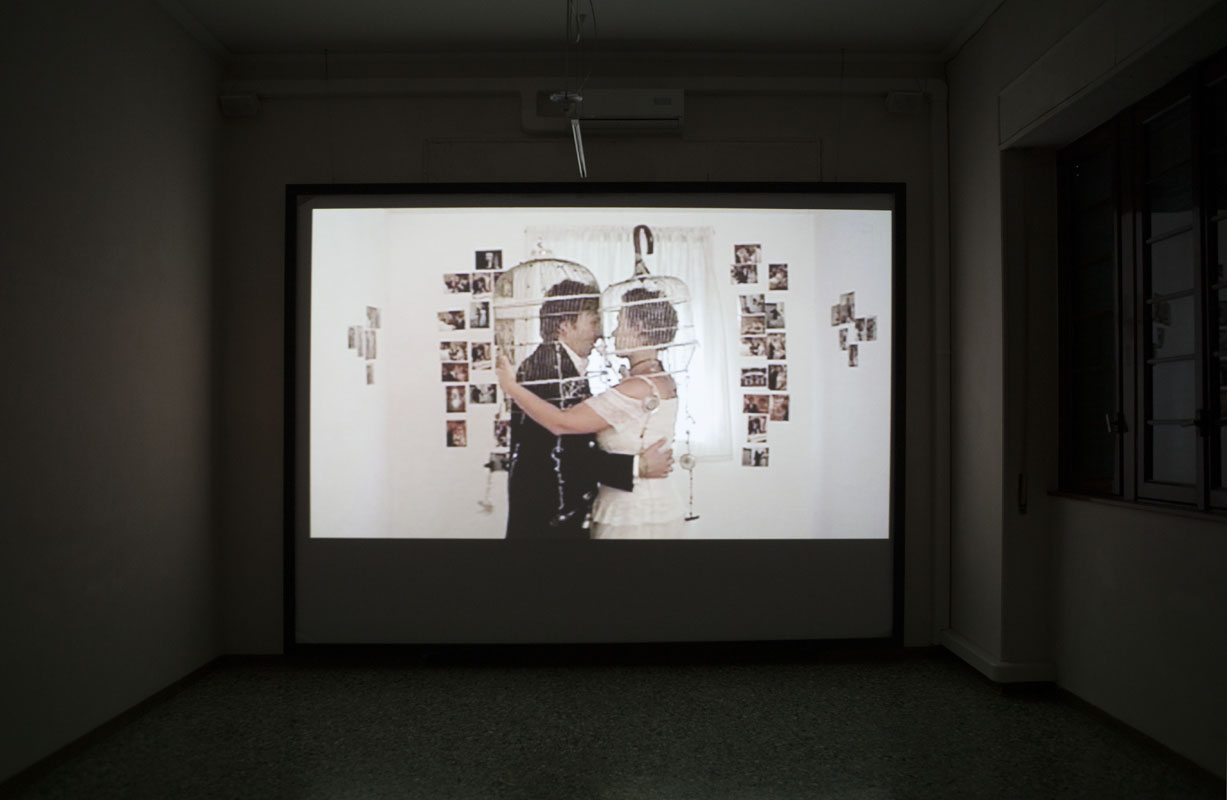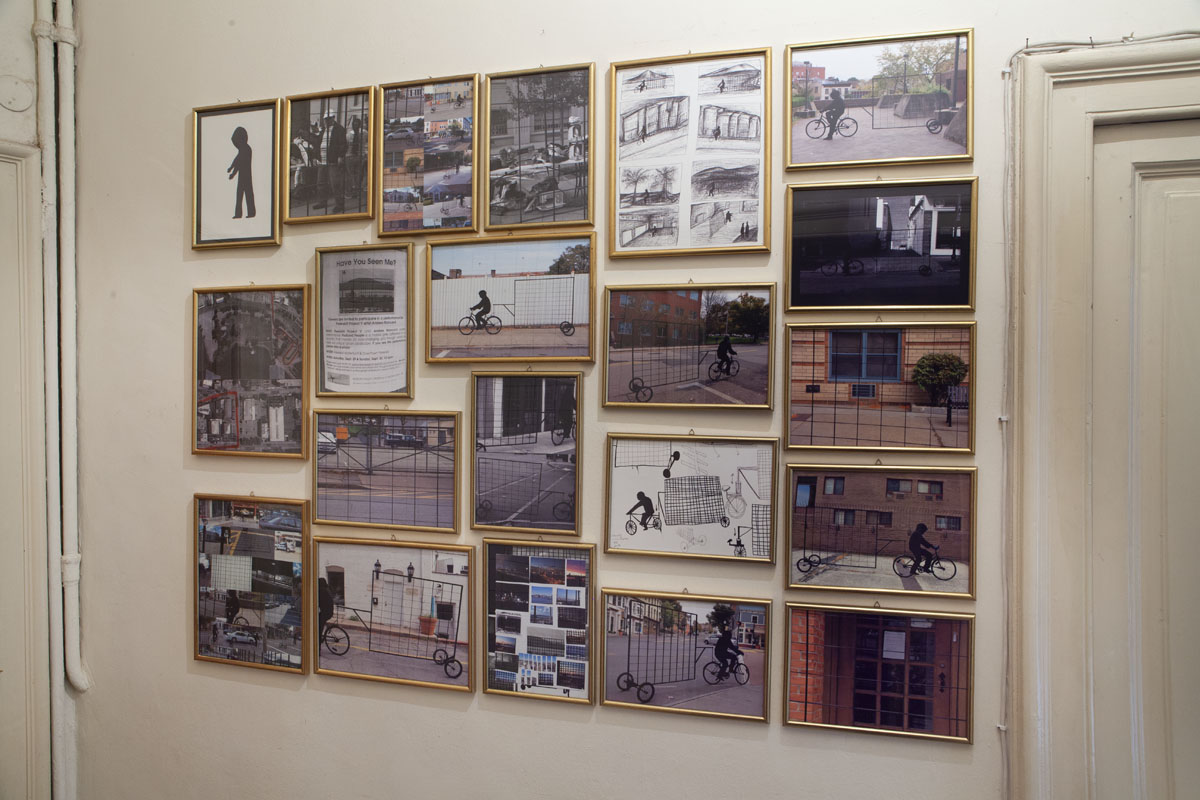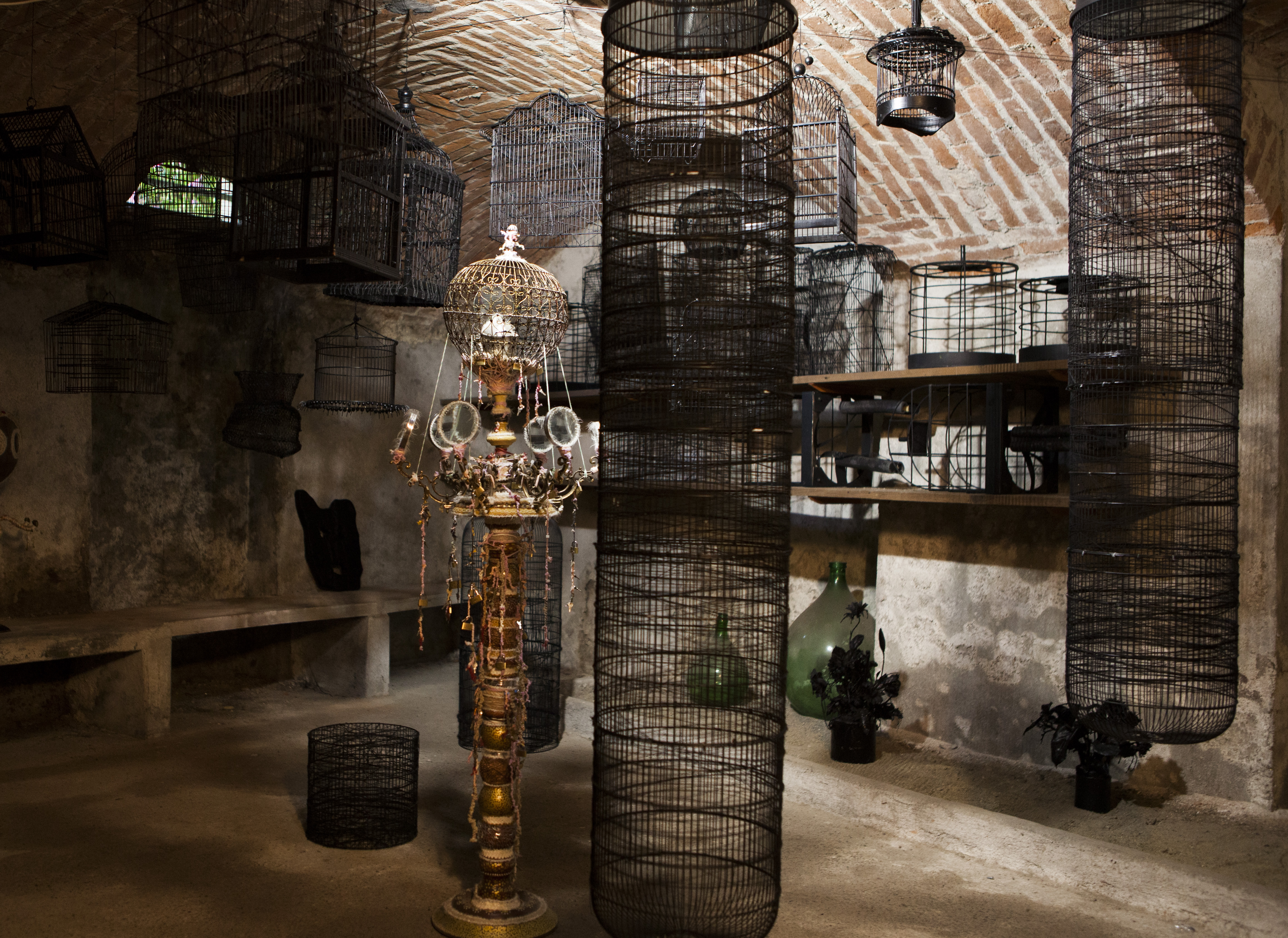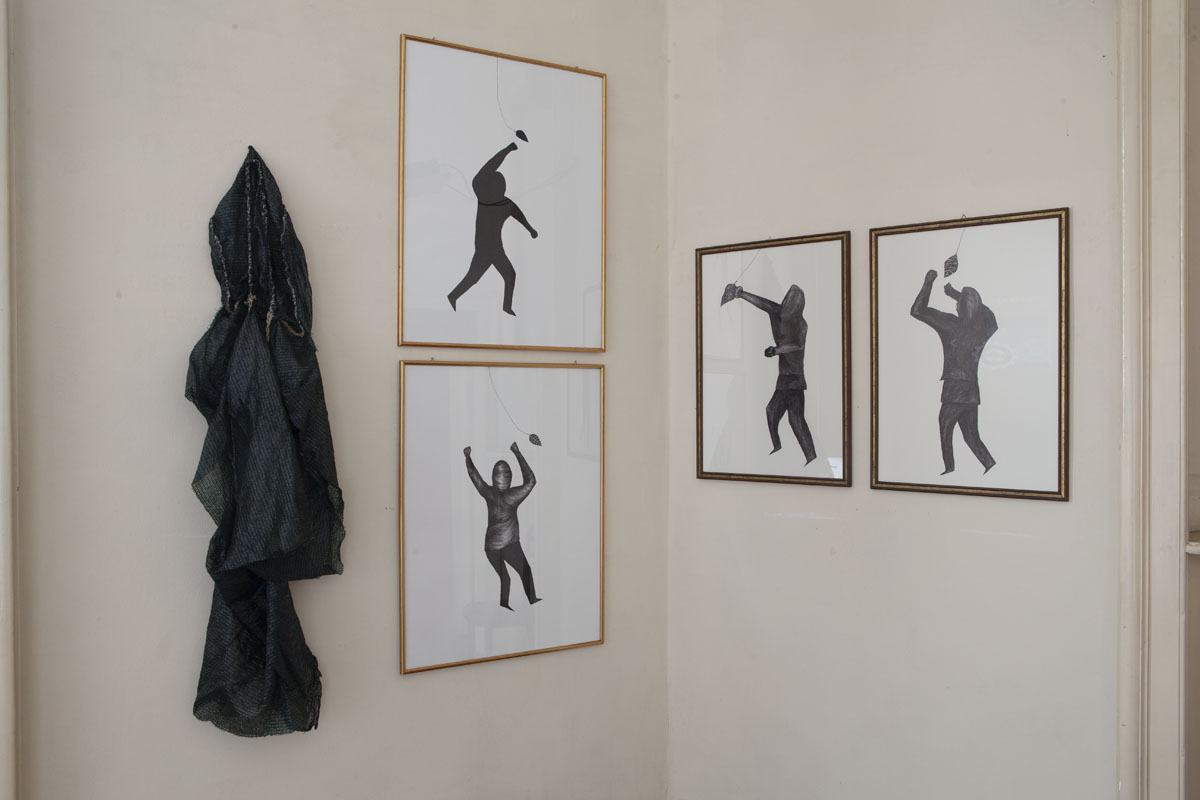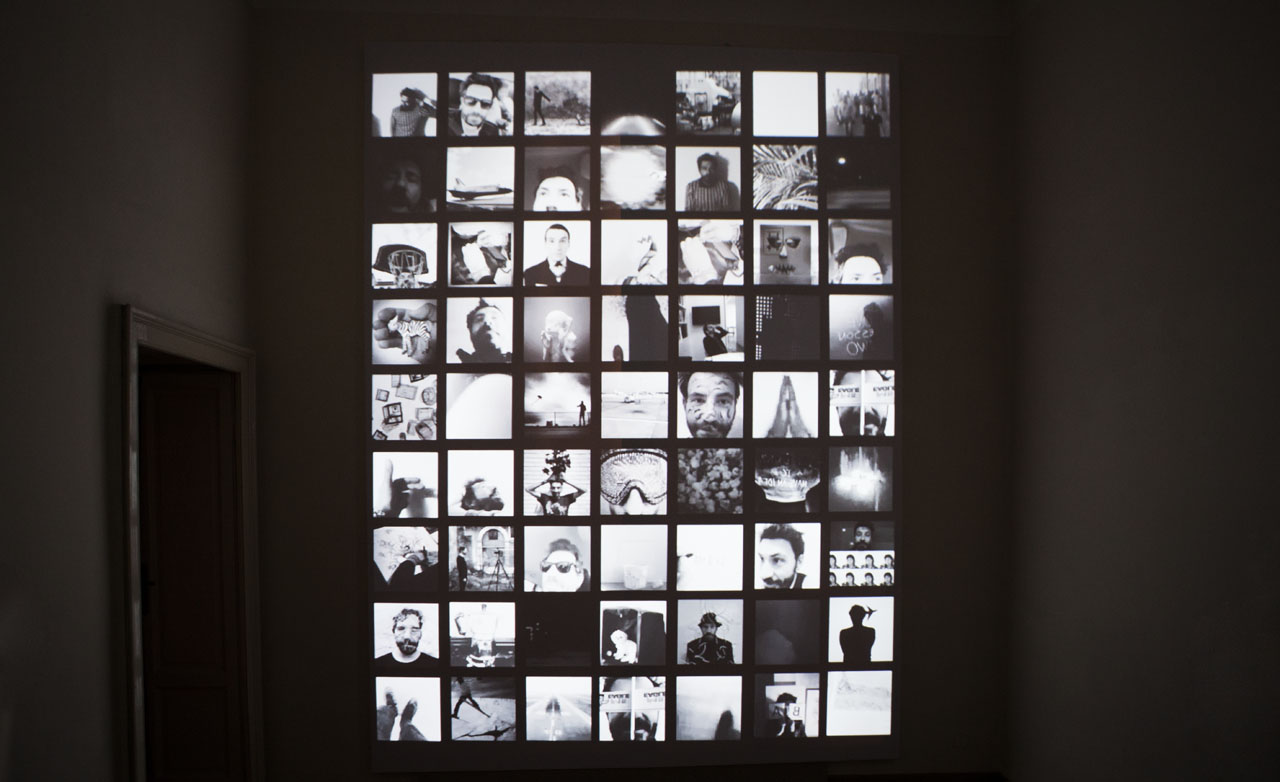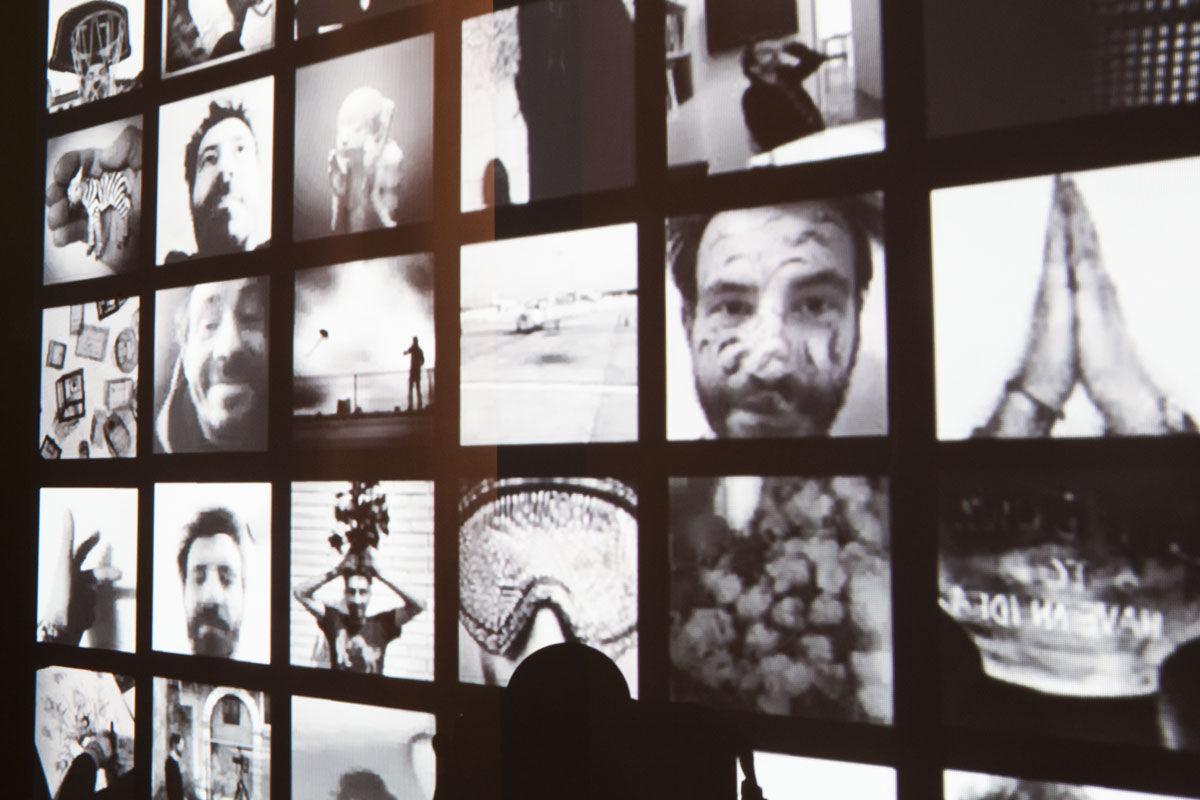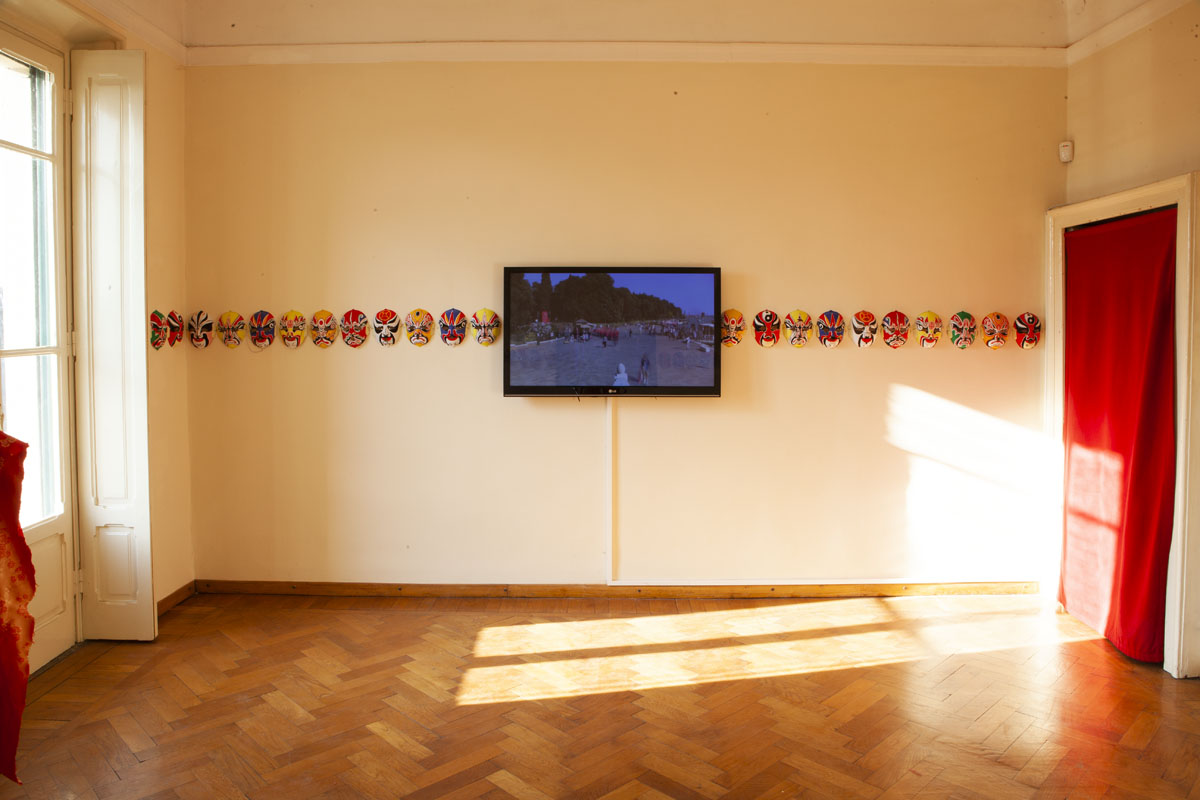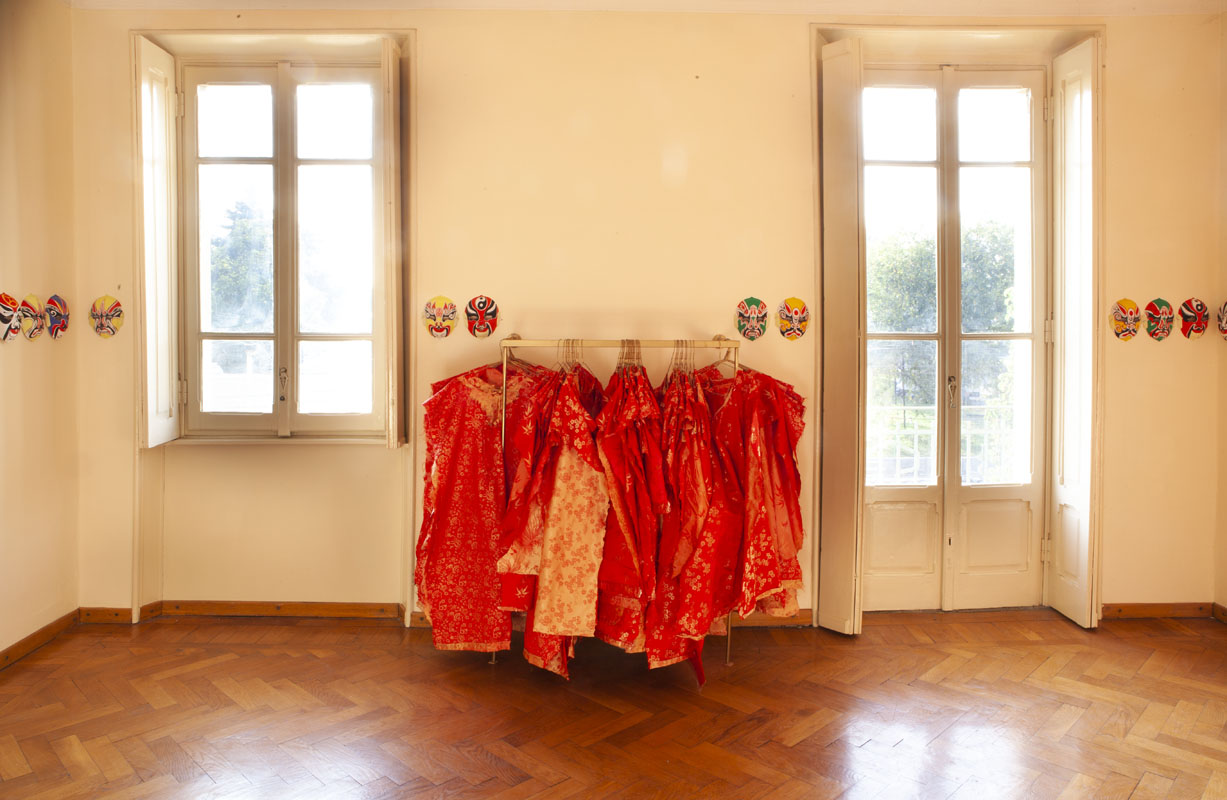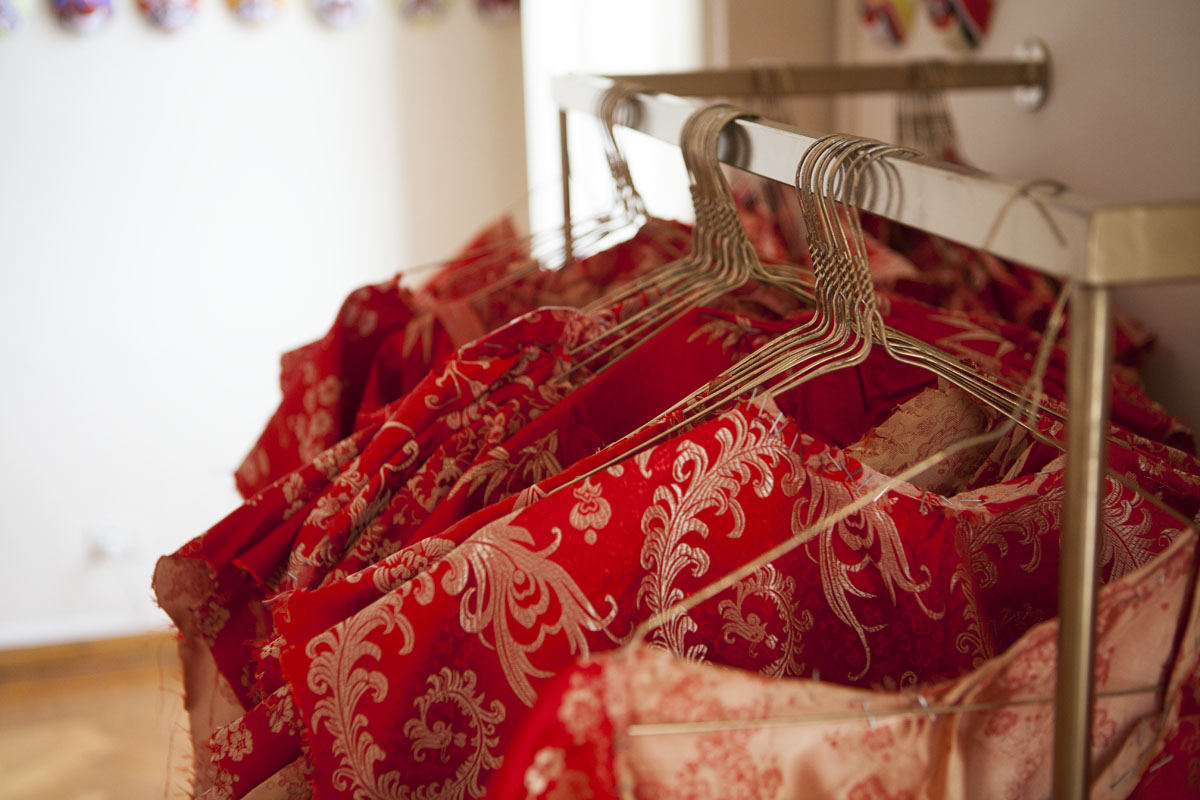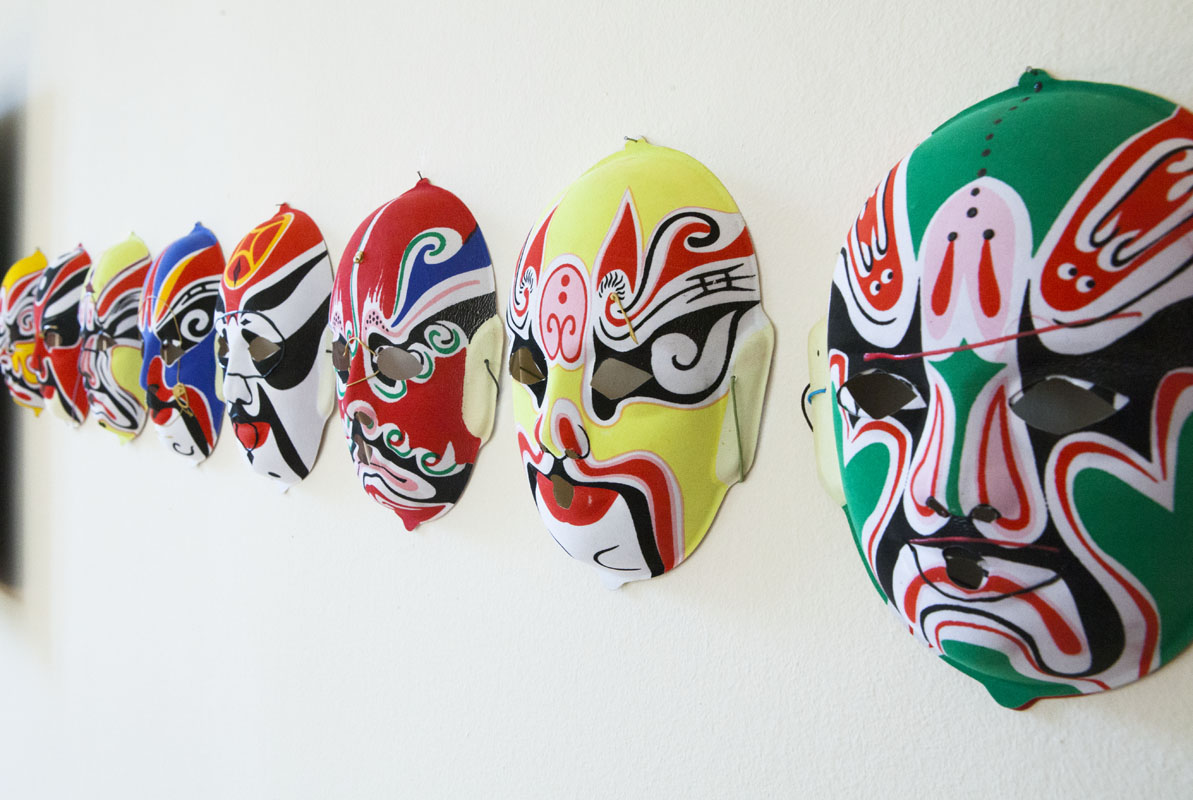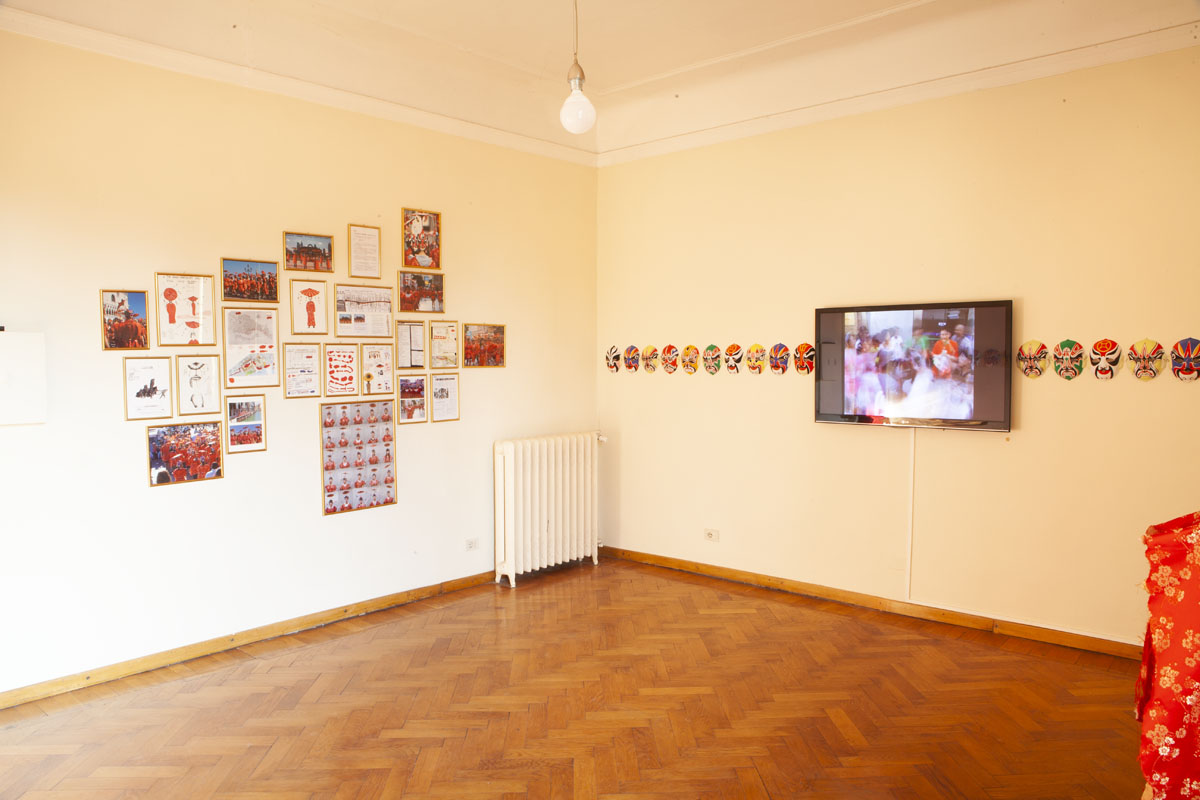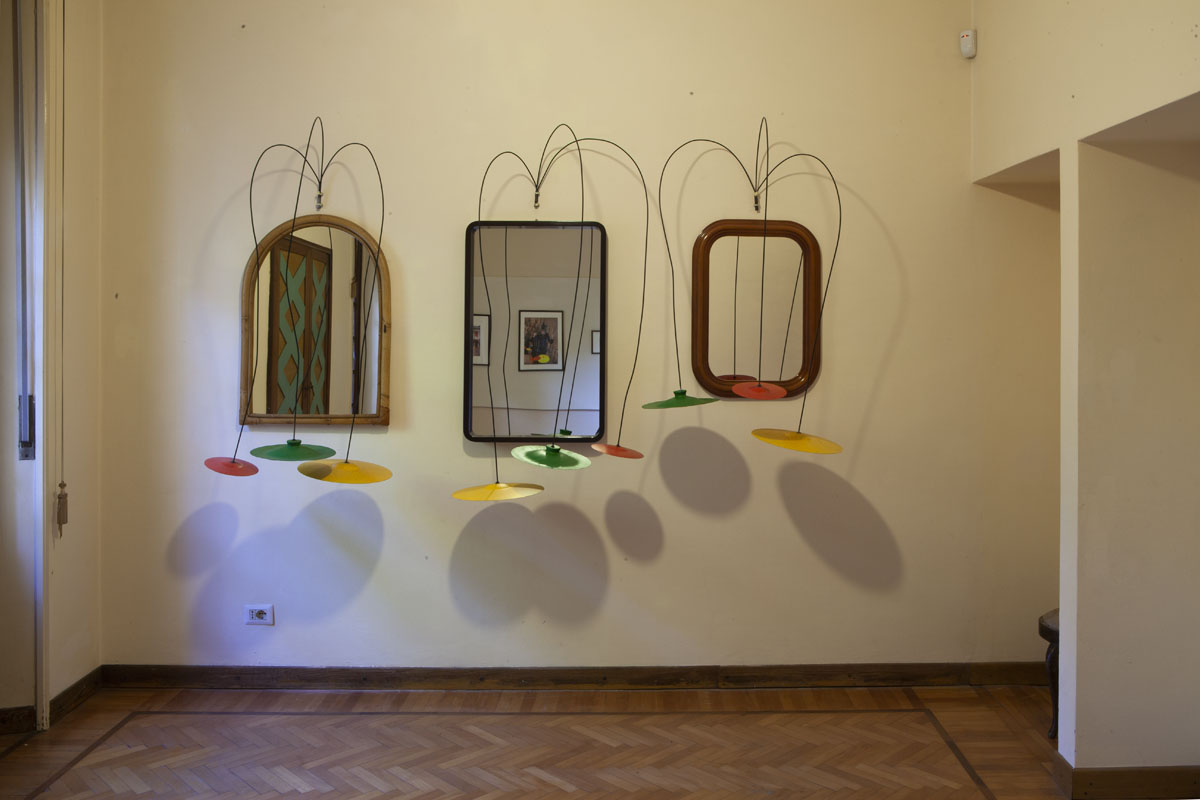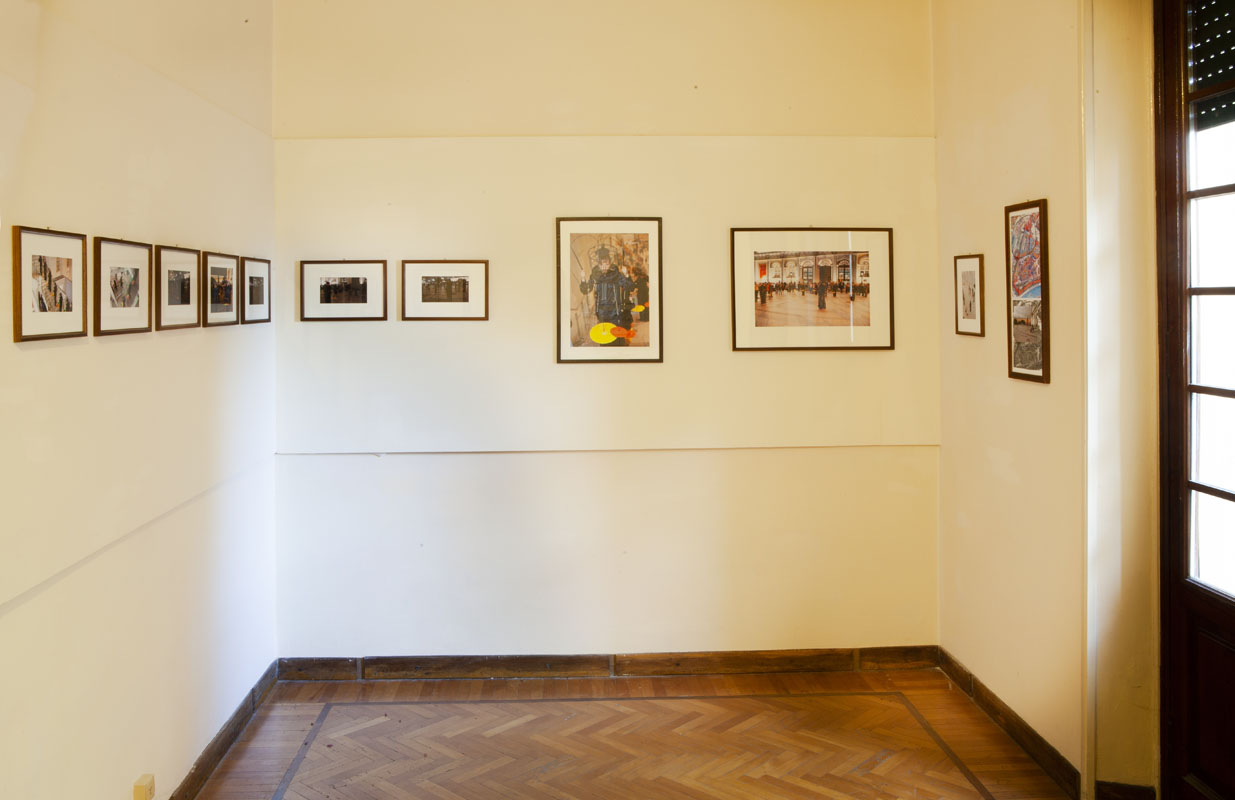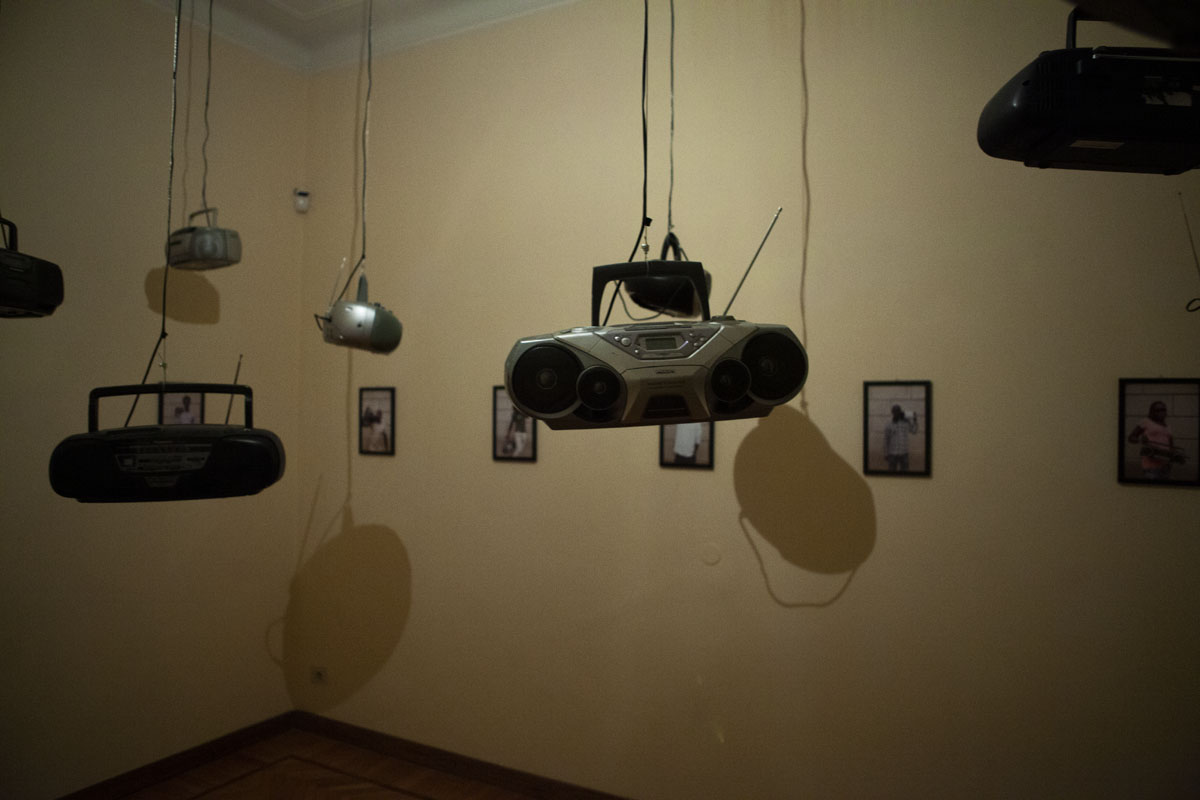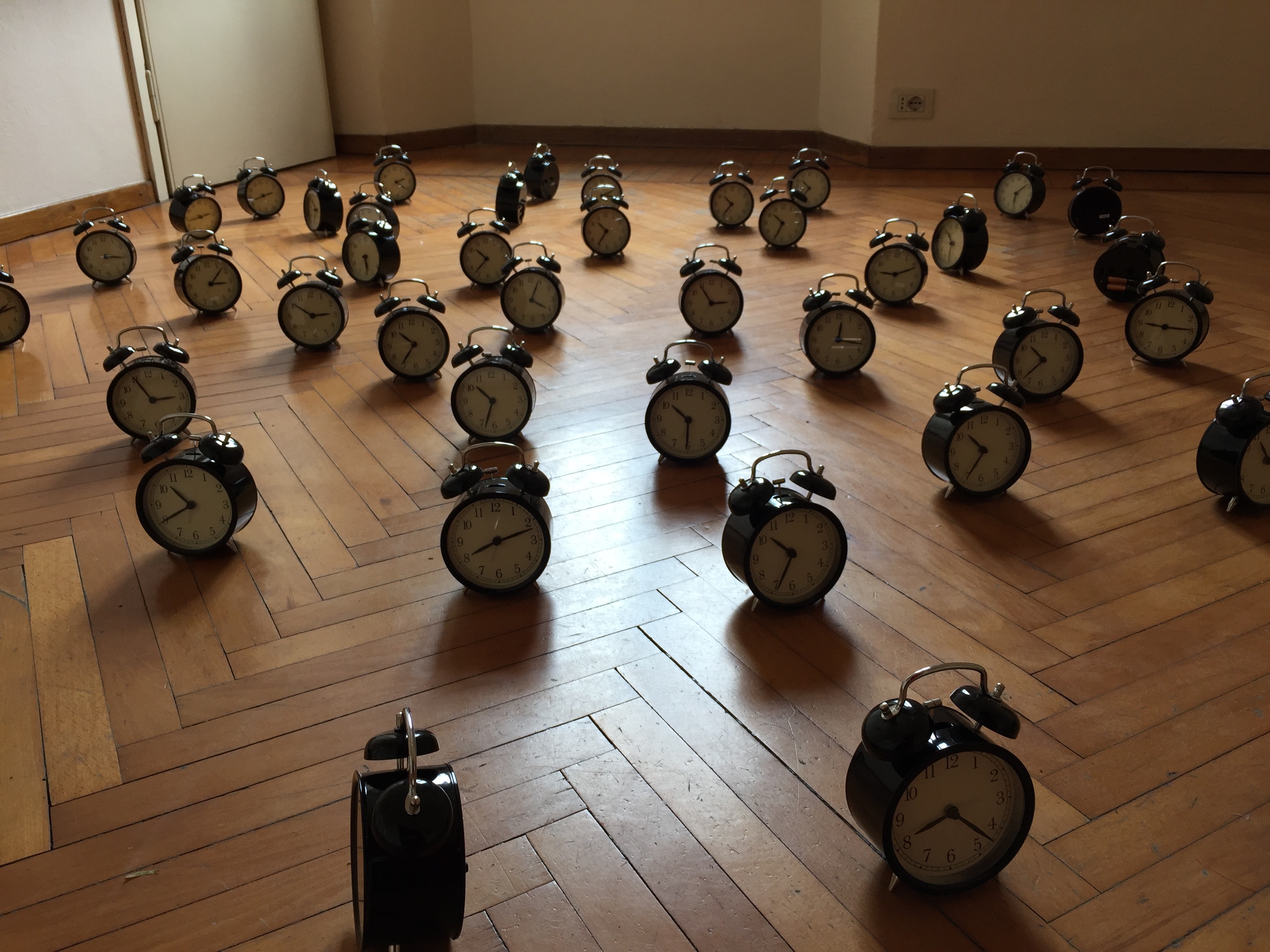Andrea Bianconi
Curated by Francesca di Giorgio
Colletta di Castelbianco
13 September 2020
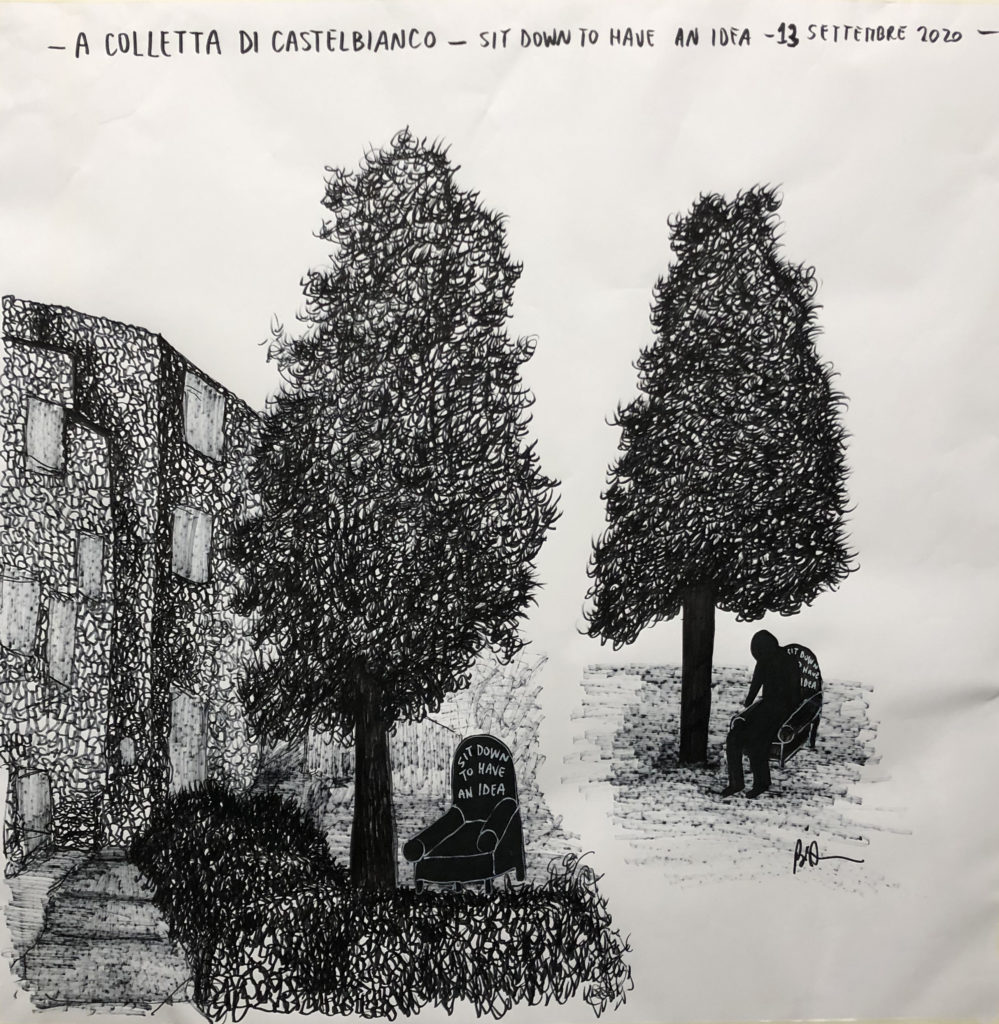
In the beginning it was Bologna, with its squares and spaces. Then came the Duse Theatre, in the intimacy of its historic halls. After that, came the summit of Monte Carega, the conquest of the open air after the isolation of the lockdown. And then Tropea, with the infinity of its sea. Andrea Bianconi’s artistic journey, Sit Down to Have an Idea, which, from January 2020, takes his author’s chairs around Italy, excites the country. More than 50,000 interactions on social media, growing every day, confirm the interest that the works arouse in the public.
And the journey continues.
On Sunday 13 September 2020 Andrea Bianconi arrived in Colletta di Castelbianco and, together with a group of inhabitants of this ancient medieval village in the hinterland of Albenga (Savona), listed among ‘I Borghi più belli d’Italia’ (Italy’s most beautiful villages), the artist brought the ‘armchair of ideas’ under the majestic pine tree that welcomes visitors at the entrance to the village and will remain there as a permanent installation. «I believe in the therapeutic function of art. Sometimes we need to rediscover ourselves, to introspect and carry out an inner quest. And nature offers us a sense of protection that allows us to rediscover this deep and poetic contact with ourselves. Thanks to its shelter, it gives us the freedom to think»states Andrea Bianconi.
For Francesca Di Giorgio, curator of Sit Down to Have an Idea at Colletta di Castelbianco: «The artist’s choice of the place to which to donate “his” armchair is part of a specific and never pre-established design. A direction that coincides with that of art which, like nature, involves, includes, frees and protects. Because there is always a direction to take, a short or long path. For everyone. The chance to sit in the armchair is an opportunity to reconcile with one’s own ideas, which we often attribute to the world of abstraction but which manifest themselves strong in their concreteness. The same ideas that led, in the 1980s, a group of entrepreneurs, led by the architect Giancarlo De Carlo (1919-2005) to rescue the village in the Pennavaira Valley, at the foot of the spectacular “Dolomite pyramid” of Castell’Ermo, from a sad fate of oblivion».
A new stop, a new destination to add to the other places which, in the artist’s vision, become tableaux vivantswhere his works/chairs interact with the public. Visitors become the protagonists of these living paintings immortalised by shots that cut to life to create infinite works in a journey that is not only artistic but also humanitarian: the Sit Down to Have an Idea project brings with it, in fact, at each stage, the awareness campaign in support of research promoted by the Fondazione Ricerca Fibrosi Cistica (FFC).
With this travelling initiative, realised in collaboration with Casa Testori and Fondazione Coppola, Andrea Bianconi conveys a profound message of hope, rebirth and reflection on our future and the ideas we must cultivate for a better world. A unique work of its kind also for the high ethical and social value enclosed in this charity enterprise.
«For me it is important when art joins scientific research, because they speak the same language, a dialogue is created between them that can generate fruits and ideas for the future. Both put man and his wellbeing at the centre»says Andrea Bianconi, recognised as one of the most interesting artists of the new generation, author of works exhibited in public museums and private spaces all over the world. «My intention with this project is to bring art into boundless spaces and contaminate them with places and visitors, to give strong emotions and ideas that are the oxygen of our existence. The oxygen that is so precious to those suffering from cystic fibrosis, the most widespread genetic disease in Italy, which blocks the lungs and eventually takes their breath away».
The event was realised with the patronage of: Municipality of Castelbianco, Colletta di Castelbianco S.r.l., I Borghi più belli d’Italia and Legambiente. And in collaboration with: Casa Testori, Fondazione Coppola, Slow Food (Albenga, Finale, Alassio and Savonese), Vincenzo Ricotta – Invest progetti, Scola (bar and restaurant), Amministrazioni Condominiali Rivierahouse.
CHARITY COMMITMENT TO SUPPORT CYSTIC FIBROSIS RESEARCH FOUNDATION
During the events, the volunteers of the FFC network were present with special stations to offer, in exchange for a donation, bandanas personalised by the artist Bianconi with the words “Sit Down to Have an Idea”, the proceeds of which are entirely donated to the Fondazione Ricerca Fibrosi Cistica.
Everyone could and can do their bit to support Italy’s leading research organisation into cystic fibrosis, the most common serious genetic disease in the country, with an average life expectancy for sufferers of just over 40 years.
THE VILLAGE
The medieval village of Colletta di Castelbianco, which stands like a natural fortress in the hinterland of western Liguria, dates back to the 12th-14th centuries. Around 1887, due to a devastating earthquake, it was gradually abandoned. Since 1980, however, the recovery and renovation of Colletta began, thanks to Professor Architect Gian Carlo De Carlo and Colletta di Castelbianco S.r.l., which made it a virtuous example of recovery and protection of the historical building heritage, going even further. Colletta di Castelbianco is equipped with every comfort and technology and enters the list of the Most Beautiful Villages in Italy.
SIDE EVENTS
Exhibition Giancarlo De Carlo e la Liguria. Luoghi, progetti, tracce
Curated by Emanuele Piccardo and Andrea Vergano
In collaboration with Federazione ordini Architetti PPC Liguria
25 September – 1 November 2020
Exhibition organised on the occasion of the centenary of Giancarlo De Carlo’s birth.

